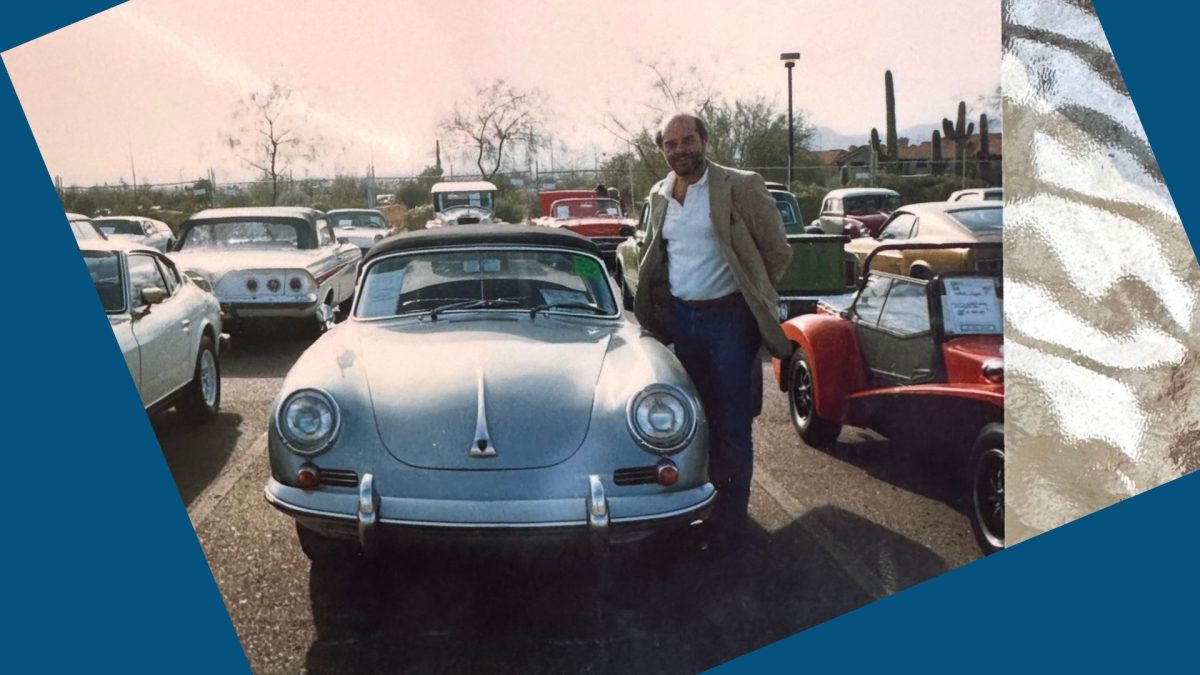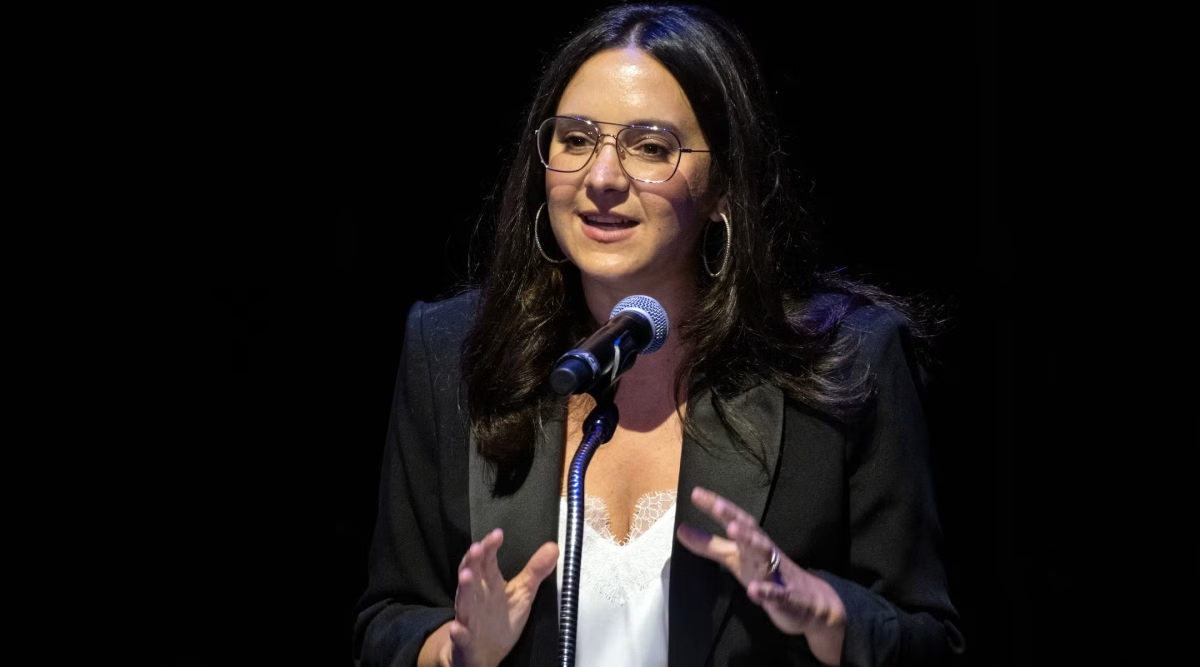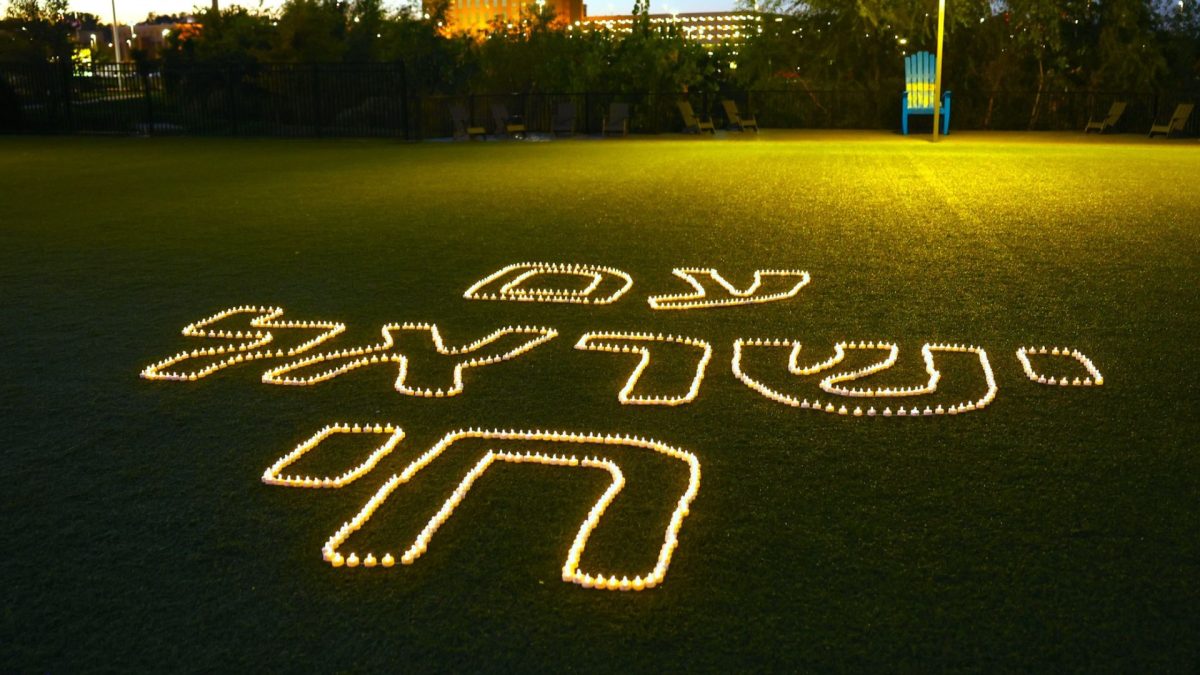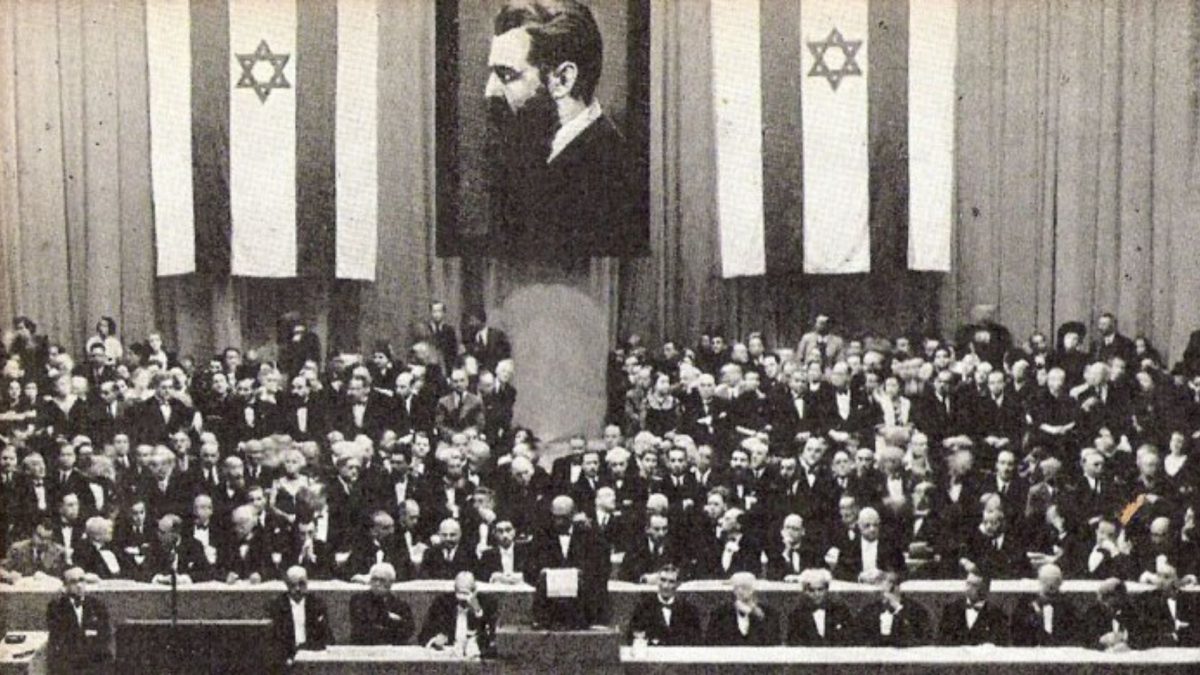For over 40 years, Buzz Spector has been reimagining the book as an artistic medium. More than just sources of knowledge, he sees books as canvases for artistic expression. His work involves altering books through methods that many might see as destructive, yet the results are deliberate and far from violent. His latest exhibition, “verso/recto,” opens at Bruno David Gallery on Sept. 20, continuing his journey into the world of book alterations, framed and mounted with meticulous care.
Buzz Spector: Altered books as artistic expression
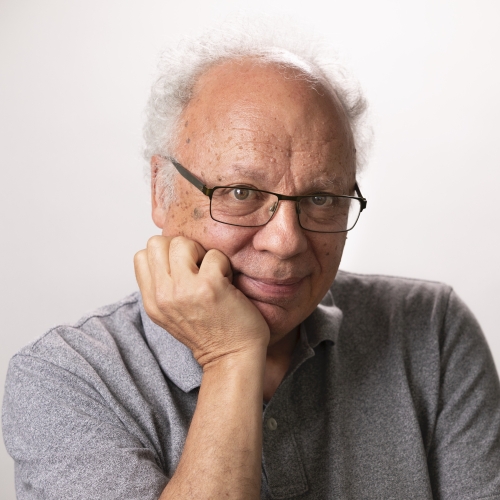
Books are at the center of Spector’s artistic universe. For him, they aren’t just objects to be read but vessels of memory. In a process that might shock book lovers, Spector tears books apart—literally—removing sections of pages in a deliberate sequence, revealing what remains and what’s lost.
ADVERTISEMENT
“Books are metaphors for memory,” Spector says. “Books with missing portions are metaphors for forgetting.”
This philosophy has guided his work since the early ’80s. His method often involves tearing out decreasing portions of pages, creating a wedge-shaped cross-section of the text. The remaining fragments, whether slivers of letters or images, echo the randomness of memory itself.
One of his seminal works, “A Passage” (1994), encapsulates this approach. The altered book consists of torn leaves where, despite the damage, the text is miraculously readable.
“The illusion of accident is furthered by a text that apparently begins mid-sentence, with a page number—181—clearly from the middle of a text block.” The torn edges and fractured narrative evoke the idea that memory is always fragmentary, always incomplete.
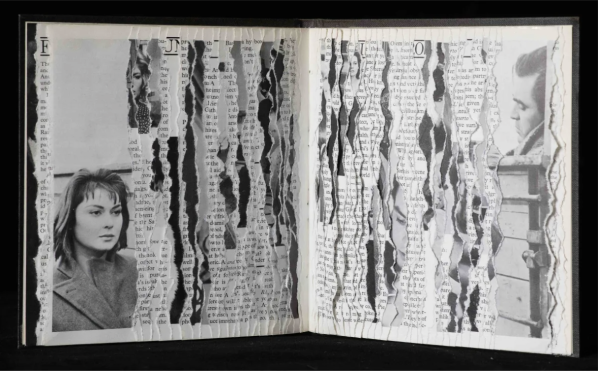
Buzz Spector: The influences behind exhibition
As you walk through “verso/recto,” you confront not only altered books but also homages to other artists and creators who have influenced Spector over the years. From the films of Michelangelo Antonioni to the conceptual works of Lawrence Weiner, Spector weaves references to his influences into his alterations. But these homages are not literal. Instead, they invite viewers to consider the broader themes of artistry, memory and perception.
ADVERTISEMENT
“Only a few of my altered books make reference to specific persons,” Spector explains. “These are homages to those men or women—artists or otherwise—who have influenced my creative practice.”
One notable piece in “verso/recto” transforms a book about the films of Antonioni, reflecting Spector’s love for the director’s work, which he first encountered over 50 years ago. Such tributes underscore the deep, personal connections between the books he alters and the creators who inspire him.
Exploring the meaning of memory through altered books
The process itself is highly methodical. While Spector’s work may appear destructive at first glance, the care and deliberation behind each tear are crucial to its creation. “One’s history as a reader is that of treating books well,” he says. “But my interaction with pages has only one descriptive word, ‘tear,’ which usually connotes a random act of violence.” Yet, in his hands, this act of tearing becomes a means of creation, transforming destruction into beauty.
Each book he alters is unique, not only in its content but in its physical properties. “Not all books are printed with the same kinds of paper, nor sewn with the same quality binding,” Spector notes. “It’s appealing to me that I must work with these differences in fashioning the finished work.”
For Spector, every tear, every missing fragment, is deliberate. And that deliberation extends to how he hopes his audience will perceive the work. His art challenges viewers to confront the damage done to books—a symbolic gesture of destruction that carries with it the weight of history, memory and loss. For the upcoming show, Spector envisions an audio tour that, in addition to commentary, will include the sound of paper being slowly torn, reinforcing the visceral nature of his work.




